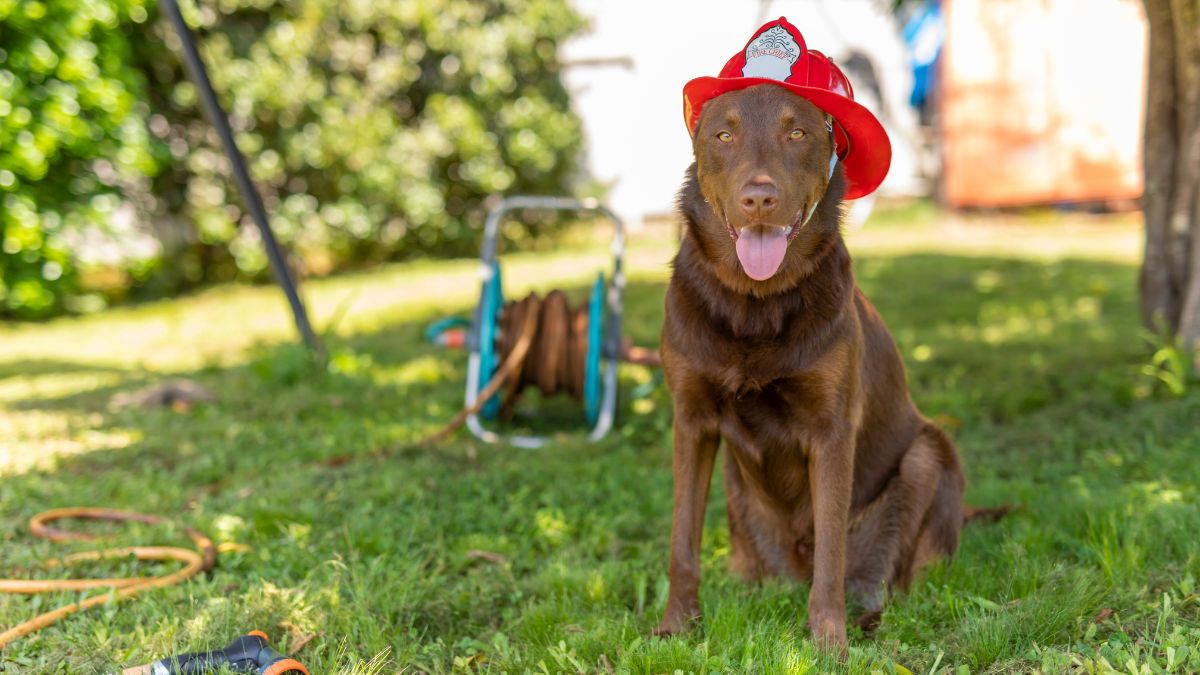Our pets are beloved members of our families, and in emergencies like fires, ensuring their safety becomes as critical as our own. Fires can break out unexpectedly, and while human family members may have practiced fire drills or discussed escape routes, our pets rely on us for their protection. Here, we’ll cover important steps to keep your pets safe in case of fire, from preparing in advance to handling emergencies as they unfold.
1. Plan Ahead: Include Your Pet in Your Fire Evacuation Plan
Just as you have a fire escape plan for your family, make sure your pet is also part of this plan. Preparing ahead is the best way to safeguard your pet’s life in the event of a fire.
- Assign roles: Designate family members responsible for each pet’s safety. Ensure everyone knows who will handle which pet, minimizing confusion during an emergency.
- Practice evacuations: Conduct fire drills that include retrieving and evacuating your pets, just like any other family member. Practicing regularly will help both you and your pets be ready if a real fire occurs.
- Use a pet alert decal: Place an alert decal on your front door or windows to let firefighters know how many pets are inside. This simple step can help emergency responders locate your pets more quickly.
2. Keep Identification Up-to-Date
Fires can sometimes cause pets to run away due to fear and confusion. Ensure your pets can be identified if they get separated from you.
- Microchip and ID tags: If your pet isn’t microchipped, consider having it done. A microchip can significantly increase the chances of a pet being returned if they are lost. Regularly update contact information on both the microchip registry and any identification tags.
- Emergency contacts: Include an emergency contact number on your pet’s tags, in case someone finds them before you do.
3. Prepare an Emergency Kit for Your Pet
Having an emergency kit ready can make evacuating with your pet safer and more manageable.
- Essentials to include: Your kit should contain items like a leash, food and water supplies, a portable bowl, a first aid kit, and any medications your pet may need.
- Include comfort items: Pets can experience extreme stress in emergencies. Familiar toys or blankets can help keep them calm during and after evacuation.
- Carriers: For small animals like cats, rabbits, or reptiles, a travel carrier is essential. Ensure that these are accessible and easy to carry.
4. Pet-Proof Your Home Against Fire Hazards
Pet-proofing your home can prevent accidental fires caused by curious or active animals.
- Remove hazards: Keep candles, exposed wires, and other flammable items out of reach. Many fires are unintentionally started by pets knocking over candles or walking near stovetops.
- Secure stoves: Pets can accidentally turn on stovetops, especially if they have easy-to-turn knobs. Use knob covers or remove the knobs when you’re not using the stove to prevent accidents.
- Opt for flameless candles: These are safer alternatives to traditional candles and offer the same ambiance without the fire risk.
5. Install Monitored Smoke Detectors
In case you’re away from home, monitored smoke detectors can add an extra layer of protection for your pets.
- Connect to a monitoring service: These detectors can alert emergency services if smoke or fire is detected, even if you’re not there. Many monitoring services have quick response times and can save critical minutes during an emergency.
- Location of detectors: Install smoke detectors near areas where your pets spend the most time, such as pet beds, crates, or favorite hiding spots.
6. Know Your Pet’s Hiding Spots
In emergencies, pets often hide due to fear. Knowing where your pet might hide can save valuable time if a fire breaks out.
- Identify safe spots: Observe where your pet likes to hide during stressful events. Common places include under furniture, in closets, or behind large objects.
- Leave exit points open: If you’re unable to find your pet, open doors and windows as escape routes and call for them from outside the house.
7. Evacuate Safely Without Re-entering
Once you and your pets are outside, avoid the temptation to re-enter a burning building, as this can put you at significant risk.
- Leave doors open: If possible, leave doors open when you evacuate, allowing pets an exit if they are still inside. Call your pet’s name from outside to encourage them to find their way out.
- Notify firefighters: Inform emergency responders of any pets still inside. Firefighters are trained to rescue pets and have access to pet oxygen masks in some areas.
8. Special Considerations for Different Types of Pets
Different animals have unique needs in emergencies, so adapt your fire safety measures based on the type of pet.
Cats and Dogs
- Towels for smoke protection: Drape a towel over a pet carrier to reduce smoke inhalation for your pet. The towel can also provide comfort by blocking out some of the noise.
- Leashes near exits: Keep leashes accessible by doors, making it easier to grab them as you exit.
Fish
- Prepare backup containers: Have fish-safe plastic bags or containers filled with water near the tank in case you need to transport them. If you have time, use a larger bucket with an air pump for extended travel.
Birds
- Portable cages: Birds are especially sensitive to smoke, so make sure you have a covered, portable cage. Cover the cage with a damp towel to help filter the air during an evacuation.
Reptiles
- Transport containers: Keep small containers or pillowcases near your reptile’s enclosure for a quick escape. Ensure these containers have holes for ventilation.
9. Post-Fire Care for Your Pet
Fires can be traumatizing for pets, and they may show signs of anxiety or health issues afterward.
- Monitor for health concerns: Smoke inhalation can cause breathing difficulties or lethargy. Consult a veterinarian if your pet exhibits any unusual behavior.
- Provide comfort: Reestablish routines to help your pet feel secure. Give them space and comfort items to reduce stress.
- Check for smoke inhalation: Some pets may require oxygen therapy if they inhaled smoke during the fire. Watch for signs of coughing, difficulty breathing, or disorientation.
FAQs
If your pet is hiding, leave doors and windows open and call their name from outside. Never re-enter the building; instead, inform firefighters of your pet’s presence.
If you don’t have a carrier, wrap your pet in a towel to help filter out smoke. However, using a carrier or leash whenever possible is safest.
Keep open flames, stoves, and exposed wires out of reach. Use knob covers for stovetops, and consider flameless candles for a safer home environment.
Include a leash, carrier, food, water, a first aid kit, comfort items, and any medications your pet may need. For exotic pets, add species-specific items like heat lamps or air pumps.
Assign each family member a specific pet during fire drills, ensuring everyone knows their role. Keep all pet carriers and leashes in accessible areas for quick access during an emergency.
Conclusion
Taking these precautions can go a long way in ensuring your pets’ safety in a fire. While we can’t prevent all emergencies, being prepared with a plan, emergency kits, and preventive measures can help protect our pets when it matters most.











